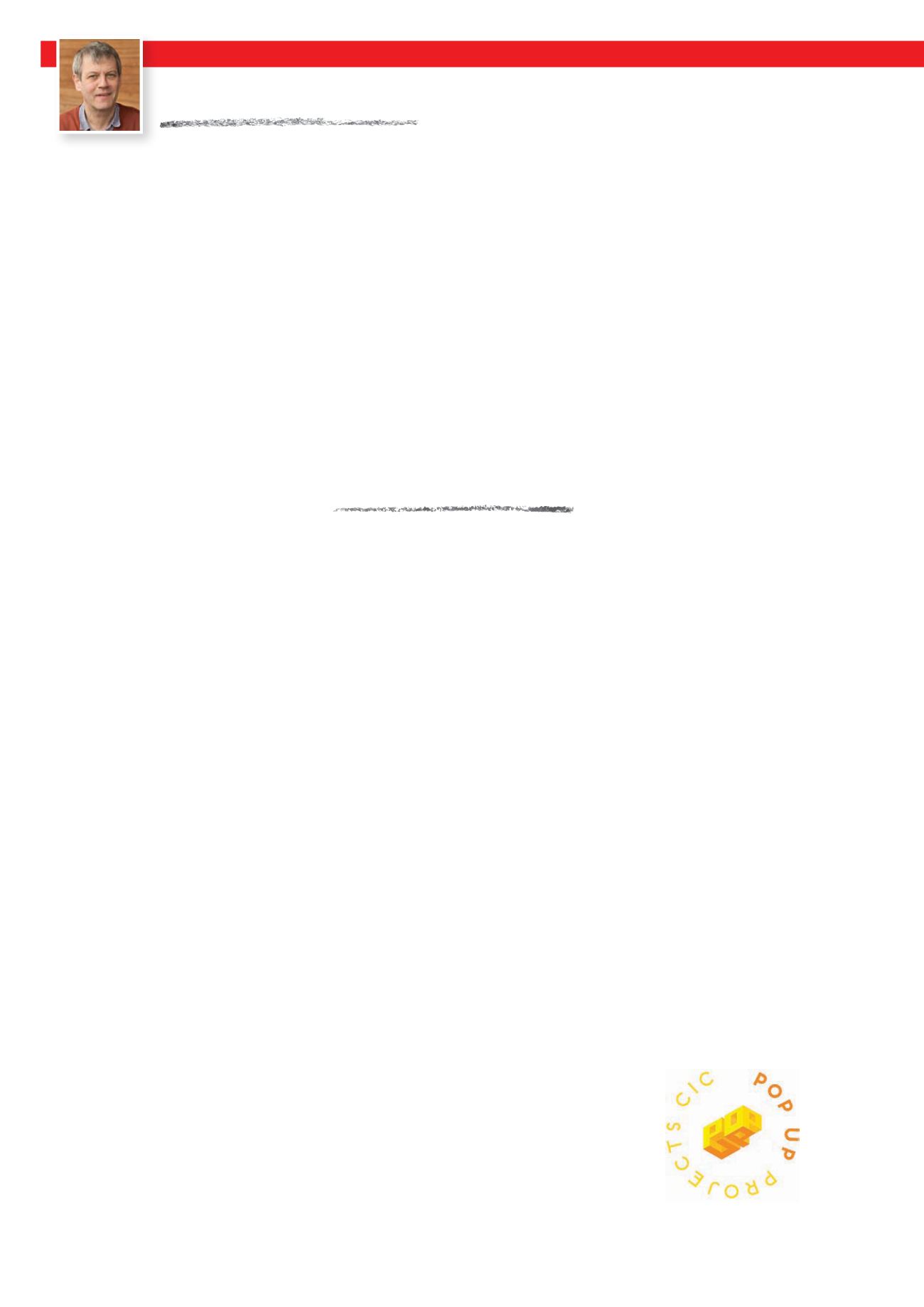
A
while back, I was at a flea
market and spotted a book
that I recognised; it was one
of the primers that I’d had
when being taught to read at
school in West Germany (as it was then) in
the early 60s. It looked like it could have been
from the 19th century! I had to buy it, for the
nostalgia aspect – in truth, though, I don’t
really have very strong memories, positive
or negative, about the process of learning
to read. My partner does; she tells me about
the huge excitement she felt when she could
suddenly make sense of road signs and so on,
but for me, well, it was just something that
one had to do.
I didn’t have many picture books as a
child – although I did have one that my father
bought from East Germany, funnily enough.
But my parents definitely read to me; I have
photographic evidence.
Later on, when I was able to visit libraries
and seek out reading material for myself, I
loved stories – especially when they were told
through illustration. I remember enjoying all
kinds of comic books, including a series about
a Danish character known as Petzi
– he was a bear who had lots of adventures
with his animal chums, presented like a comic
strip, with no speech bubbles, but captions
below the pictures. I definitely appreciated
the way the words and images worked
together to get the message across.
I always liked to draw – I don’t think my
pictures back then were particularly special
(mind you, I still feel the same about my work
today, so what do I know?) but I produced a
lot of them, both in and out of school. I would
doodle in the margins of books, or on scraps
and improve on EH Shepard’s interpretation
of the characters. It’s perfect; such a classic.
I turned down the opportunity to reillustrate
Wind in the Willows
for the same reason.
It was different with
Old Possum’s Book of
Practical Cats
, by TS Eliot, though; there, it
felt like I had room to explore my own ideas.
When I was younger, I thought that
maybe one day I could write my own story;
but it turns out to be more difficult than
I thought. I haven’t quite given up – I like
to remind myself that one of my favourite
author-illustrators, William Steig, didn’t start
writing until he was over 60 – but the fact is,
I can’t do plots; I produce one picture, but I
don’t know what happens next. My daughter
is eight, and trilingual (her mother is French,
and we live in London). Her reading journey
has been a good one; she’s surrounded by
so many books, in all three languages, that
we could open a lending library, and it’s
been such a great experience to see a child
growing up with so many stories around her.
Perhaps she’ll have the knack of narrative
and write something for me to illustrate; in
the meantime, maybe I should return to the
Gruffalo and try giving him a new look?
of paper, and then I started coming up with
absurd little characters, which made my
friends laugh and of course, that motivated
me to do it even more. I suspect that’s how
a lot of illustrators start out. Later on, after
a brief and enthusiastic flirtation with the
surrealists, I was inspired by artists like
Tomi Ungerer; I loved his humour, and
also how there are always funny details
lurking around the edges of his images. I
think children really love seeing things their
parents don’t, and discovering those kinds
of touches – it works for me, but then, there
are many different styles and approaches for
producing good picture books.
I know that my artwork is inextricably
linked for most children, and their parents,
with the stories of Julia Donaldson, and I
am very proud of that. I feel privileged to be
connected with her words, and happy that
we are considered as a team, even though we
don’t work ‘together’ as such. It’s amazing
to me that my interpretation of what the
Gruffalo looks like, for example, is an image
that’s already in the head of nearly every
child I meet.
That said, the way he appears today is
quite different from how I first imagined
him. He was much scarier; the editor said
I needed to tone him down. Interestingly,
when I show children the original version
they always seem to prefer him the first way
– but I can understand the argument for him
being less intimidating. He’s an ambivalent
creature, really; he’s not bad, or evil. Just a
hungry Gruffalo.
I don’t have a ‘dream story’ that I wish I
could have illustrated – I admire Winnie the
Pooh, for example, but I wouldn’t want to try
6
TEACH READING & WRITING
“I think children really
love seeing things their
parents don’t”
MY LIFE IN BOOKS
Axel Scheffler is involved with Pop Up
projects. Find out more at pop-up.org.uk.
Everyone knows what theGruffalo looks like – but it’s
not how
Axel Scheffler
first imagined him
Axel Scheffler


